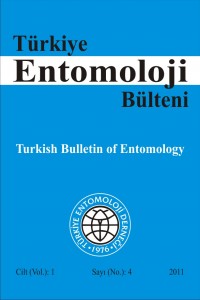Abstract
Animal carcasses and human bodies are hosts of many insects species during decompositon. These species feed on corpses at different stages of the decomposition process. The first arthropods that arrive on a dead body are usually carrion flies. These flies might bring their own specific phoretic mite species to the animal carcasses and human bodies. So, phorectic mites are the first arthropods colonising a dead body and they might become a good marker to determine the time of death. The survival time following the host’s death of some mites, which are present before death on body, can help to solve criminal cases. Sometimes the environment, where the corpse is found, can affect invasion of insects. Under these circumstances, mites might become the only arthropods on a dead body and help answer critical questions pertaining to human death investigations. At the same time, mites might provide information not only about the time of death, but also about cause of death and movement or relocation of bodies.
Keywords
Abstract
Ölü bir insan veya hayvan bedeni, ayrışma boyunca pek çok böcek türüne konukçuluk edebilir. Bu türler ayrışma sürecinin farklı dönemlerinde ceset üzerinde bulunurlar. Ölü bedene ilk gelen arthropod’lar genellikle leş sinekleridir. Bu sinekler beraberlerinde kendilerine özelleşmiş foretik akar türlerini cesede taşıyabilirler. Dolayısı ile phoretik akarlar da cesedin ilk ziyaretçilerinden olup, ölüm zamanının belirlenmesi açısından önemli göstergelerdir. Ölümden önce vücutta bulunabilen bazı akarlar ise, konukçularının ölümünden sonra canlı kalma süreleri ile adli olayların çözüme kavuşturulmasında yardımcı olabilirler. Bazen cesedin bulunduğu ortam böcek istilalarını önleyecek özellikte olabilir. Bu koşullar altında çoğu zaman sadece akarlar bulunabilir ve insan ölümü ile ilgili soruşturmalarda pek çok kritik sorunun cevaplandırılmasında yardımcı olabilirler. Ancak akarlar yalnızca ölüm zamanı değil, ölüm nedeninin belirlenmesi, cesedin taşınıp taşınmadığı ve cesedin yeni yeri ile ilgili bilgiler de verebilirler.
Keywords
Details
| Primary Language | Turkish |
|---|---|
| Journal Section | Review |
| Authors | |
| Publication Date | August 19, 2011 |
| Published in Issue | Year 2011 Volume: 1 Issue: 4 |


